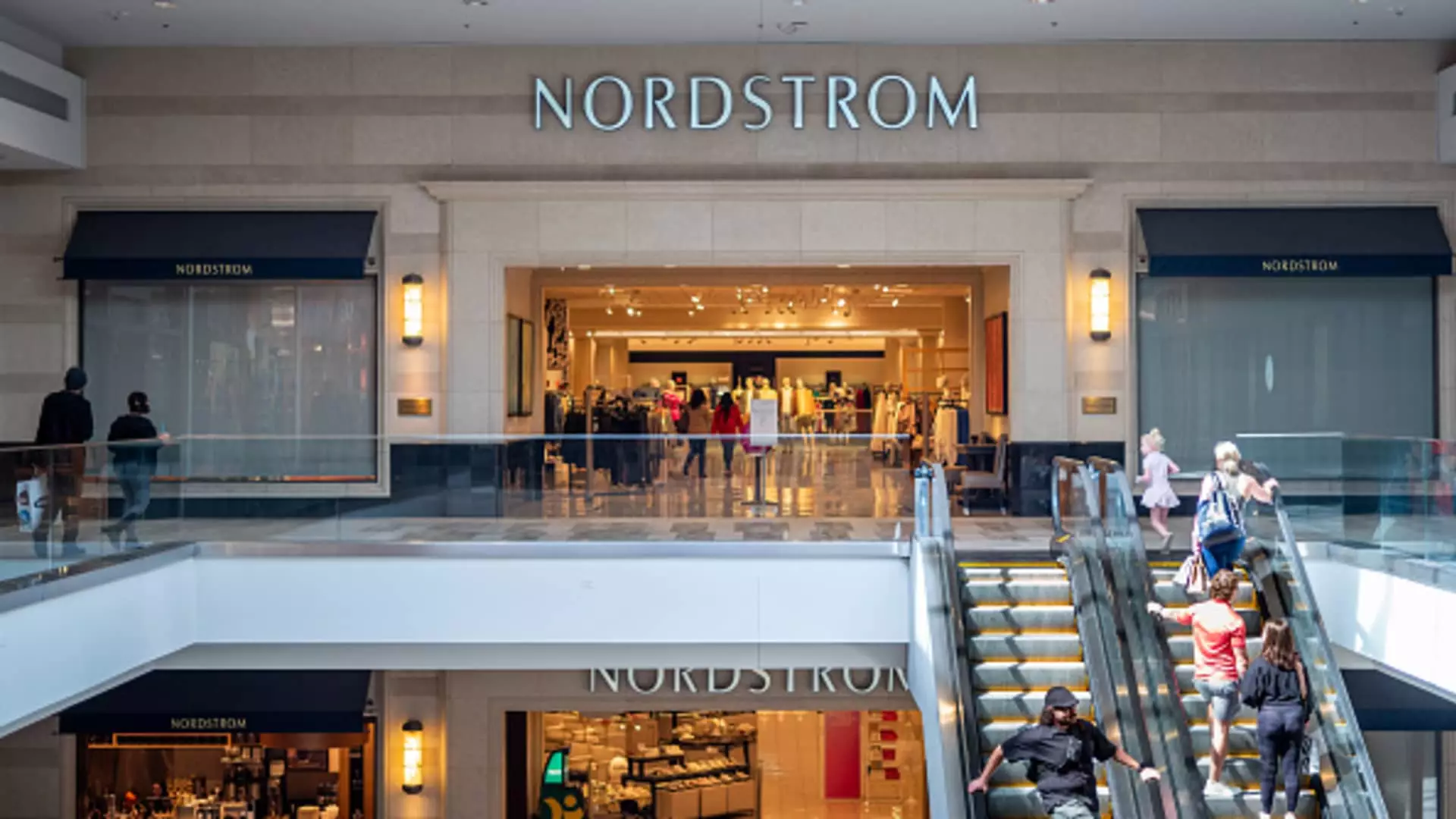On a recent financial announcement, Nordstrom has taken a notably optimistic step by adjusting its revenue forecast for the year, aligning it with a stronger-than-anticipated holiday shopping season. The department store chain reported that both in-store and online sales exceeded its prior expectations, prompting a revision of its full-year sales growth projection from a previously stagnant prediction of flat growth to an increase of approximately 1.5% to 2.5%. This revision, however, comes with a caveat—this increase accounts for an extra fiscal week omitted from consideration, raising questions about the sustainability of such a performance.
Despite the upward revision in sales forecasts, the retailer has chosen to maintain its profit guidance. This decision prompts a critical evaluation of Nordstrom’s strategic positioning in a fluctuating retail climate. CEO Erik Nordstrom acknowledges the challenges faced in the months leading up to the holiday season, specifically citing a marked downturn in sales trends by late October. This perspective urges stakeholders to analyze whether the company’s proactive promotional strategies throughout the season contributed significantly to the improved results.
Digging deeper into the numbers reveals that net sales rose by 4.9%, with comparable sales—those that exclude the impact of store openings and closures—showing an increase of 5.8% for the nine-week period ending January 4. When dissecting these figures, it becomes evident that the different segments of Nordstrom’s business present varying performance levels. The Nordstrom flagship stores registered a net sales increase of 3.7% with comparable sales up by 6.5%. Meanwhile, the off-price division, Nordstrom Rack, demonstrated an even stronger performance, with net sales leaping 7.4% and comparable sales increasing by 4.3%.
These figures bring to light a significant narrative regarding consumer behavior during the holiday season. As consumers leaned towards more value-oriented shopping options, particularly within the off-price segment, Nordstrom’s strategies proved effective in catering to such shifting preferences. It raises an important consideration of whether the company can sustain this momentum beyond the holiday shopping season, especially given the competitive landscape.
Nordstrom’s upwardly adjusted outlook is not existing in a vacuum; it reflects broader trends in the retail industry. Preliminary figures released by Adobe Analytics indicated an increase of nearly 9% in online spending from November 1 to December 31 compared to the previous year. Similarly, Mastercard SpendingPulse reported a year-over-year rise of 3.8% in retail sales for the holiday season—but this excludes automotive sales. Such data provides a crucial foundation for assessing consumer health and spending power during critical retail periods, underscoring the broader resilience of consumer spending trends in the face of economic uncertainties.
As major retailers such as Walmart and Macy’s gear up to unveil their quarterly results, their performance will likely shed more light on the retail sector’s overall health. How these competing entities perform could either reinforce or challenge Nordstrom’s optimistic outlook for the remainder of the fiscal year, highlighting the necessity for constant adaptation in retail strategies.
Adding a further layer of complexity to Nordstrom’s circumstances is the looming buyout deal involving the founding family and Mexican department store chain El Puerto de Liverpool, valuing approximately $6.25 billion. With expectations for closure in the first half of 2025, this proposed acquisition introduces concerns regarding the potential impact on operational priorities and strategic direction. How the transition from a public to a private entity will influence Nordstrom’s approach to market competition, customer engagement, and long-term growth remains a potent subject for stakeholders to contemplate.
All said and done, while Nordstrom’s recent sales outlook raises hopes for improved performance in the retail sector, the retailer must navigate numerous challenges, including market saturation, changing consumer trends, and the complexities of transitioning to private ownership. As such, stakeholders and industry observers alike will be keenly monitoring the company’s ability to keep up with momentum in a fast-paced and evolving landscape.

